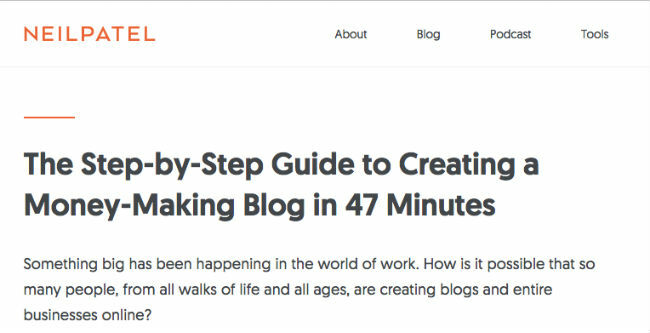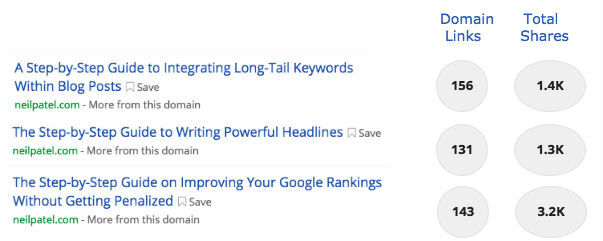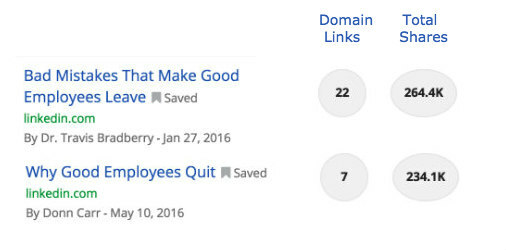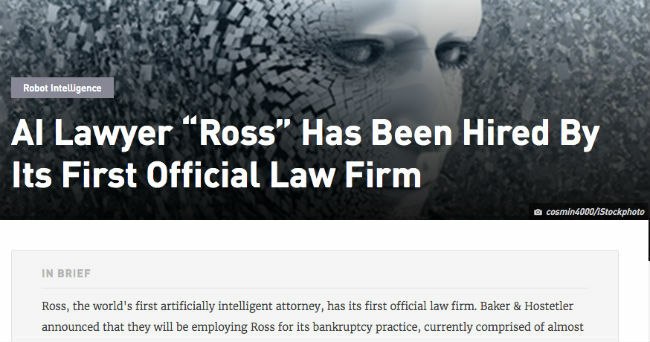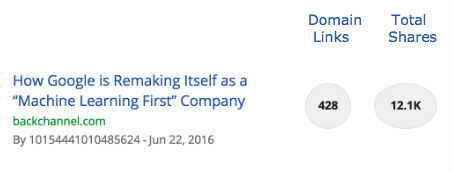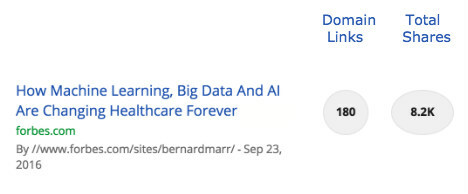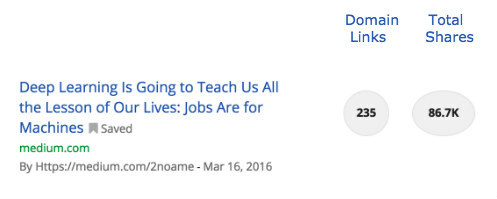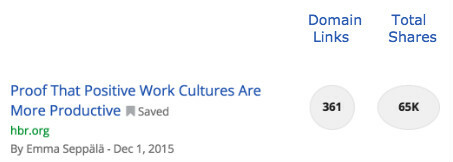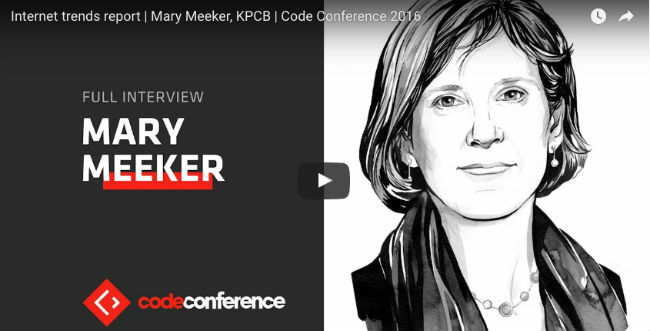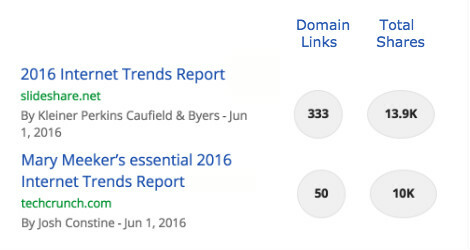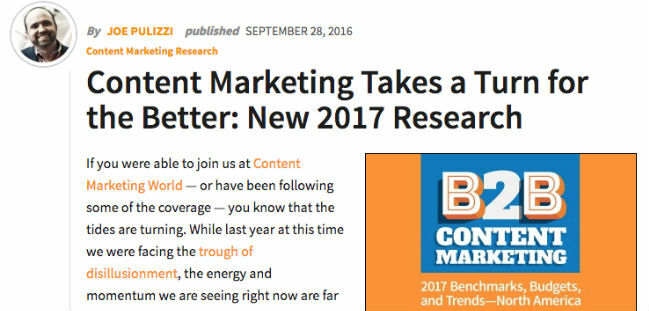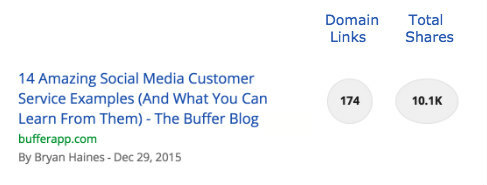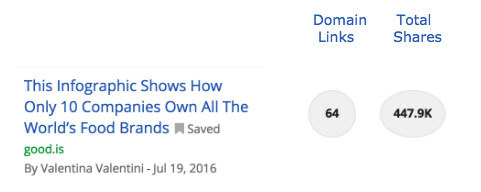We have been reviewing the best B2B content of the year with our friends at Uberflip. In this post we highlight some of the best individual examples and also the six most successful B2B content formats. We hope this will be helpful and provide some inspiration when developing your content strategy for 2017.
Our approach
Trying to identify the top B2B content is clearly a subjective task. This year we have focused on B2B content that has been well shared and/or has gained a large number of links. Both shares and links are important in content amplification. Shares can particularly help visibility and content distribution while links tend to help authority, search engine rankings and longevity. The number of links referred to throughout this article are the number of linking domains i.e. the number of unique domains that link to the article, rather than the total number of links.
We hope the examples act as inspiration for your B2B marketing ideas and campaigns. Also we would love your thoughts and examples of top content.
The B2B Content Formats That Outperform
We have identified six B2B content formats in our research that consistently perform better than the average. The six categories or formats are:
- Practical guides and helpful content
- In vogue and hot topics
- Research and insights
- Case studies
- Infographics
- Authoritative industry news
We have provided examples of successful B2B content in each category below.
1. Practical Guides and helpful content
Jay Baer was absolutely right when he highlighted the importance of content utility and providing helpful content. There are many variations on helpful posts, here are just a few examples:
- Guides
- Top tips & tricks
- How to posts
We find practical content is consistently one of the top performing B2B content formats and this year was no exception.
Guides
The real power of practical guides is in building links and authority. One person who really understands this is Neil Patel. Here is an example guide he published this year.
The number of shares is not exceptional but the number of links is very high. Given how hard it is to gain domain links it is difficult to underestimate the importance of this Guide in driving authority, traffic and longevity.
Many of the guides in Neil’s series of step-by-step guides have achieved over 100 domain links as we can see below.
Is there an opportunity for you to create similar guides in your own areas of authority?
Tips and Tricks
A variation on ‘how to’ and guide posts are tips. These are typically shorter and more focused. Here is a good example from Larry Kim.
Larry is a master of the viral headline and this post is no exception. It is a list post with a promise. The tips are unusual which means I am probably not aware of them and the impact is dramatic which has an emotional appeal. The post was the most shared on the Moz blog this year.
Another good example of a tips post from Moz this year was this article by Cyrus Shepard.
The post headline is another one that tempts you in, almost click-bait style to find out what the tip actually is. The post was the fourth most shared post on Moz this year but it also attracted a high number of links, which is arguably more important in terms of gaining authority and ranking power.
Advice posts
Practical advice posts are much the same as tips. This year a number of these posts on LinkedIn particularly resonated with B2B audiences. The two top posts were about retaining employees including this post from LinkedIn influencer Travis Bradbury.
This post was shared over a quarter of a million times. What is interesting is that very few people linked to the post, as we can see below, despite a huge number of shares. As a general rule we find low levels of links to posts on the LinkedIn Pulse channel, even where there are very high numbers of shares. These posts are an example of the lack of correlation between shares and links.
2. In Vogue and Trending Topics (Think Artificial Intelligence)
Every year there are in vogue industry topics. These are the hot issues that are often hyped but they generate a great deal of discussion and debate. We find that posts about trending topics resonate and attract more shares than posts on other topics, though given their fleeting nature they typically get few links. However, there are exceptional posts that leverage a hot topic to gain both shares and links, and we have highlighted some examples below.
This year’s in vogue business topic has been artificial intelligence. It has almost been the business equivalent of Donald Trump. There have been thousands of posts about AI, machine learning, automation and deep learning. We have highlighted some of the posts that really stood out for us this year.
This first post highlighted how AI robots are taking the place of lawyers.
This post is about Ross, “the world’s first artificially intelligent attorney” (yes, plenty of scope for jokes here) built on IBM’s cognitive computer Watson. The post provides a powerful and practical example of AI. Despite being a short form post, the article attracted links as well as shares.
Content writers came up with many different approaches to demonstrate the impact and importance of AI. One of the most effective approaches was to review how leading companies were adapting and deploying AI. Back Channel produced two posts that performed exceptionally well. These looked at how Google and Apple are deploying AI and machine learning.
Both articles received a significant number of links and shares. The posts leveraged a trending topic by using two extremely powerful brands. They also promised practical insights, with the “How” element in both titles. These two posts received more links than any other articles on the Back Channel site this year.
Another angle adopted by content writers was to look at the impact of AI on specific industries. This post was a good example.
The post received a relatively low number of shares by the standards of Forbes but it attracted a high level of domain links, much higher than the average for Forbes.
One further approach when writing about trending topics is to highlight how the trend or development may affect people personally. This post is a great example of how AI may affect us personally. (For the moment I am still writing these posts rather than a bot.)
This post on Medium (originally on the Boston Globe) attracted both shares and links. We know that people like to share warnings and potentially this is a warning post. You can also see how authors writing about the future of work would link to this article.
This next example leveraged the popularity of Pokemon Go earlier this year.
The post did exceptionally well not just because it was about Pokemon Go (which was insanely popular at the time) but because it promised practical insights into increasing sales. It was these practical insights on how to use Pokemon Go to increase sales that enabled it to achieve over 800 different domain links.
In summary, there are many options when writing about new or trending topics. Approaches include:
- an overview of the impact across industries
- how specific companies are adapting
- the impact on specific sectors
- the impact on individuals
- practical ways to leverage the new tools or insights
3. Research and Insights
Research reports are a content format where we have found a high correlation between shares and links. A research report that gets well shared is also likely to gain a high number of links. This is especially true of well researched, data-driven reports that are clearly independent of any vendor bias.
Below is an example from Harvard Business Review. This article was based on a review of a number of different research studies which provided evidence about the impact of positive work cultures on productivity.
This post acquired more links than any other post on the site in 2016 and was the fourth most shared.
Some of the most successful research reports focus on industry trends. They often provide a wider picture that can include political, social, economic and technology change.
One of the best examples of industry trends research continues to be Mary Meeker’s annual Internet Trends report. This report or slideshare provides a broad overview of the internet landscape.
The slideshare this year was shared over 13,000 times and acquired over 300 links from different domains.
Techcrunch as always were quick off the mark and published their take on the report the same day, which attracted a similar level of shares but far less links than the original slideshare. Publishing original research has more authority but there is also scope for commenting on publicly available data or bringing together data from various industry sources.
Another good example of research around industry trends this year was Gartner’s emerging technology report highlighting three key trends to gain competitive advantage.
The summary article about the report gained over 350 domain links.
A good example from our industry is Social Media Examiner’s annual industry report. This is their eighth-annual social media study. Over 5,000 marketers took part in this year’s study.
This report is a good example of producing annual surveys and reports which become cornerstone reference points for the industry. There are many examples of regular annual research reports which can include top tools, industry surveys or SEO ranking factors. This is another example of industry research from Joe Pulizzi and the Content Marketing Institute which gained over 190 domain links.
Not all of us have the large audiences that sites like Social Media Examiner or CMI have but you can build an audience for your own annual reports. This post, in its own small way, is part of our strategy to establish an annual series of research posts. Our first research post last year ‘How to go viral: Lessons from the most shared content of 2015‘ received 4,000 shares and over 170 domain links. We hope to build on this through a series of annual posts.
The great thing about research reports is someone else has done the research for you and saved you time. There are many ways you can save your audience time through research without producing a major industry report. Here are just a few examples:
The 60 best marketing speakers to rock your event
There are lots of conference and event organisers looking for speakers. Michael Brenner has helpfully put together a list of 60 speakers to help this audience and I was not surprised to see that this helpful post was one of his most shared this year.
50 social media marketing influencers to follow
Who should you be following on social media? Lee Odden put together this helpful list to save you time trawling through Twitter and various sources. Lee also leveraged the Social Media Marketing World event by linking to the sessions where you could see the influencers speak at SMMW. No surprises that this was Lee’s most shared post this year.
32 cent B2C leads and $1.82 B2B leads with quizzes and Facebook ads
It can be difficult working out the most cost-effective ways of generating leads. In this post Brian Carter shares examples and the detailed costs of different lead generation activity. Again he has done the research for the audience thereby saving them time and providing them with insights.
5 Snapchat statistics that prove its power
Most marketers would have been thinking about Snapchat this year. Should they invest or keep a watching brief? Jay Baer addressed the question every marketer was asking with research and a data backed post. People like to reference and link to data. This post achieved over 150 domain links.
4. Case Studies and Stories
Case studies are still under used in my view. People want to do their job better and one way is to learn from case studies. They’re also stories, at least the good ones are, and are highly memorable and sharable when well written.
This first example is from Wired about the story of Uber’s rebranding.
It was not one of the most shared on Wired but it appealed to a particular audience as we can see from the large number of domain links.
Below is another good use of case studies from Buffer.
This post provides inspirational examples of social media customer service examples. It was the third most shared post on the Buffer site in the last 12 months and it achieved more domain links than any other post. I think this is testament to the power of case studies to acquire links.
5. Infographics
I will admit I am not a lover of infographics, but the data proves they are a very successful and highly shareable content format. This is a good example from July this year.
This graphic was shared over 440,000 times.
This next infographic is another good example. It was the most shared article on Hubspot in the last year.
The post combined useful practical tips with an infographic.
We find infographics are widely shared but as a rule they tend to gain few links. However, there are exceptions where infographics act as reference guides.
I did more research on Hubspot’s use of infographics and found that they have had enormous success with reference guide infographics that gain both shares and links. Here are two of their most successful. Just these two infographics achieved over 1,000 domain links. To put that into context, just think about the amount of link outreach work you would need to do to achieve over 1,000 domain links.
Few of us can dream of getting the shares and traffic that the Hubspot site drives. However, we can learn from them. Are there opportunities for you to create reference infographics that may gain both shares and links?
6. Authoritative Industry News
Breaking industry news is always well shared but to gain links and shares it needs to be authoritative. This makes it difficult for many of us to create this form of content as we don’t have the authority. However, we can learn from the bigger news sites. When they break news stories they understand the importance of authority and credibility. Thus it is quite common to see them use words such as ‘official’ in their post titles. Here are a few good examples from this year.
This news article emphasizes the authority of its post by starting the headline with “confirmed.” This post received a large number of links and shares, as it was heavily referenced.
In a similar way Techcrunch reinforces the accuracy of its reporting by using the word ‘officially’
We may not all have the authority and reach of a Techcrunch. But we can help to build our authority by providing an original take on a story or by assessing the practical implications for our industry. Consider creating tips, guides and how to posts that help your audience understand what the latest industry developments mean to them.
Summary
Ok, we know we must have missed some great B2B posts this year. But hopefully this review has provided some inspiration and ideas as you plan your 2017 content strategy. Does your plan include the following content formats?
- Practical guides and helpful content
- In vogue and hot topics
- Research and insights
- Case studies
- Infographics
- Authoritative industry news
Finally, let us know about the posts we missed and the posts that inspired you this year. It would be great to build a more comprehensive list of the best B2B posts of 2016.
Categories
Marketing TrendsCategories
Marketing TrendsThe Monthly Buzz⚡
Subscribe to BuzzSumo's monthly newsletter to:
Stay up-to-date with the best of the best in content marketing 📝
Get data-informed content, tips and tidbits insights first 👩🏻💻
Read top shared content by top marketing geeks 🤓
Try
Enter any topic, term or url to search to see BuzzSumo in action. It’s free!
100% free. No credit card required.
